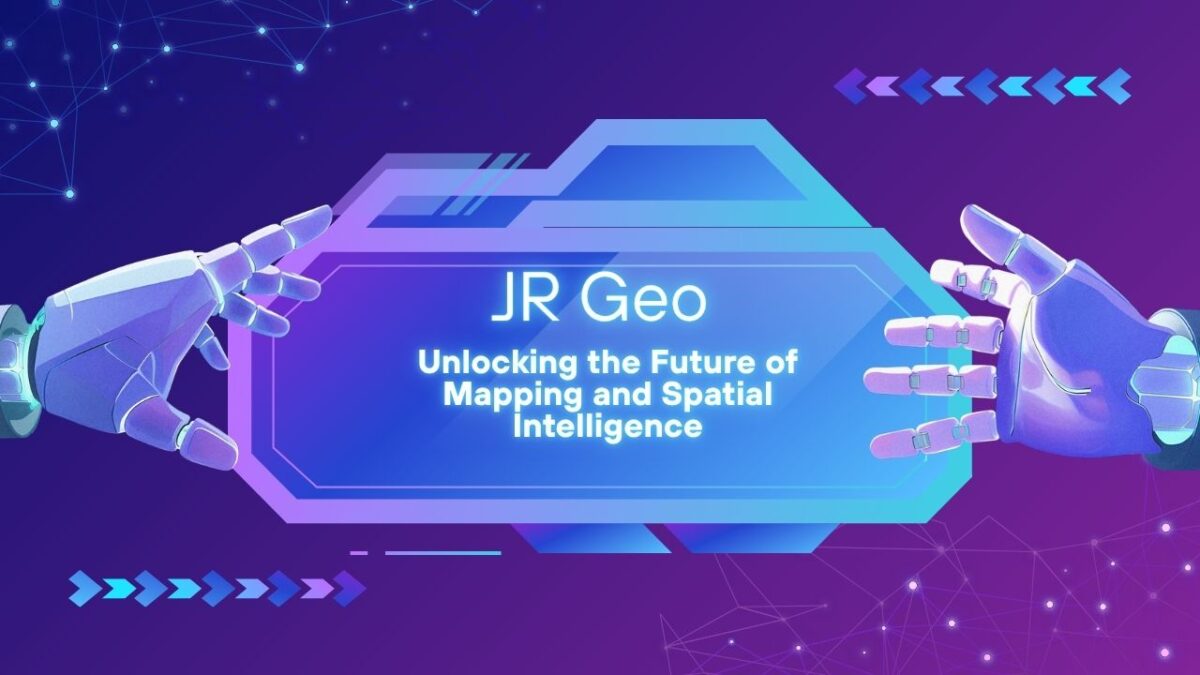Japan, a nation renowned for its seamless blend of ancient traditions and cutting-edge modernity, boasts one of the world’s most efficient, extensive, and geographically transformative transportation systems: the Japan Railways (JR Geo) Group. Often referred to as the backbone of Japanese mobility, JR’s intricate network of trains, including the iconic Shinkansen (bullet trains), doesn’t just move people; it fundamentally shapes the nation’s geography, economy, society, and cultural connectivity. This deep dive into “JR Geo” explores how this railway giant has etched itself into the physical and human landscape of Japan, creating a paradigm of integrated transport geography.
The Genesis of a Giant: A Brief History of Japan Railways
The story of JR is inextricably linked to Japan’s own journey into modernity. Following the Meiji Restoration (1868), Japan urgently needed to modernize its infrastructure. The first railway, connecting Tokyo (then Edo) and Yokohama, opened in 1872, a pivotal moment that ignited the railway age. Over subsequent decades, the network expanded rapidly, becoming state-owned under the Japanese National Railways (JNR) after World War II.
However, by the 1980s, JNR faced severe financial difficulties, inefficiency, and bureaucratic challenges. A landmark decision was made: privatize and split the behemoth. On April 1, 1987, the Japan Railways Group was born, comprising six regional passenger companies (JR Hokkaido, JR East, JR Central, JR West, JR Shikoku, JR Kyushu) and one nationwide freight company (JR Freight). This restructuring injected vitality, innovation, and customer focus into the system, setting the stage for its current dominance.
The JR Network: Weaving a Tapestry Across the Archipelago

The geographical footprint of JR Geo is staggering. It spans the entire Japanese archipelago, from the snowy expanses of Hokkaido in the north to the subtropical beaches of Kyushu in the south, and includes the main island of Honshu, along with the smaller islands of Shikoku and Kyushu, connected by bridges and tunnels.
- Shinkansen (Bullet Trains): The crown jewel of JR’s network. These high-speed trains operate on dedicated tracks at speeds exceeding 300 km/h (186 mph). The Tokaido Shinkansen (Tokyo-Nagoya-Osaka-Kyoto-Hiroshima-Hakata/Fukuoka) is the world’s busiest high-speed rail line. Other key lines include the Sanyo, Tohoku, Joetsu, Hokuriku, Kyushu, and Hokkaido Shinkansen, constantly expanding (e.g., the recent extension to Sapporo).
- Conventional Lines: A dense web of local, rapid, and express trains serving every corner of Japan, connecting cities, towns, and villages. This includes scenic routes like the Yamanote Line (loop around central Tokyo), the Takayama Line through the Japanese Alps, and the picturesque Hisatsu Line in Kyushu.
- Ferry and Bus Services: JR Group companies also operate essential connecting ferry services (e.g., JR Kyushu Ferry between Hakata and Busan, South Korea) and extensive bus networks, ensuring seamless integration beyond the railheads, especially in more remote areas.
This network represents one of the densest and most reliable rail systems globally, with trains renowned for their punctuality, cleanliness, and safety.
JR Geo: Reshaping the Physical and Human Landscape
The impact of JR on Japan’s geography is profound and multifaceted:
- Urbanization and Megalopolis Formation: JR, particularly the Shinkansen and key conventional lines, has been a primary driver of urbanization. Cities along the Tokaido Shinkansen corridor (Tokyo, Yokohama, Nagoya, Kyoto, Osaka, Kobe, Hiroshima, Fukuoka) have experienced explosive growth, merging into a continuous megalopolis often called the “Tokaido Corridor.” This corridor is home to over 80 million people and represents the economic engine of Japan. JR facilitated commuting over vast distances, making these cities more accessible and attractive for business and residence.
- Regional Development and Accessibility: JR lines have been instrumental in opening up remote and rural regions. The Shinkansen extensions to Tohoku (northeastern Honshu) and Hokkaido significantly reduced travel times from Tokyo, boosting tourism, business investment, and migration to these areas. Similarly, JR’s extensive conventional network ensures that even mountainous regions and smaller islands remain connected, supporting local economies and preventing excessive depopulation. The concept of “equal accessibility” is a core principle of JR’s geographical influence.
- Tourism Transformation: JR has revolutionized tourism in Japan. The Shinkansen makes it possible to visit multiple major cities and attractions in a single day or short trip. The Japan Rail Pass, exclusively available to foreign tourists, offers incredible value for unlimited travel on JR lines (including most Shinkansen), making exploration of the country incredibly convenient and popular. Scenic railways operated by JR, like the Sagano Scenic Railway in Kyoto or the Yufuin no Mori in Kyushu, are tourist attractions in their own right.
- Economic Corridors and Logistics: JR Freight plays a vital role in the national economy, transporting goods efficiently along rail corridors that parallel major Shinkansen and conventional lines. This reduces road congestion and carbon emissions. The location of major JR stations often dictates the placement of businesses, shopping districts, and logistics hubs, further cementing the railway’s role in shaping economic geography.
- Cultural Exchange and National Cohesion: By making travel faster, cheaper, and easier, JR has broken down geographical barriers within Japan. It facilitates the movement of people for work, education, family, and leisure, fostering a greater sense of national unity and cultural exchange between different regions. The ease of travel encourages Japanese citizens to explore their own diverse country.
Technological Innovation and Geospatial Integration
JR has consistently been at the forefront of railway technology, with direct implications for its geographical reach and efficiency:
- Shinkansen Technology: Continuous advancements in aerodynamics, braking systems, propulsion, and track technology allow for higher speeds, smoother rides, and operation in diverse conditions (earthquake resistance, snow clearance), enabling network expansion into challenging terrains like mountains and coastlines.
- Intelligent Transportation Systems (ITS): JR employs sophisticated systems for train control, scheduling, and passenger information. This includes real-time tracking, automated announcements in multiple languages, and integrated fare systems (like Suica/Pasmo IC cards) that work seamlessly across JR and other transit operators, enhancing the user experience and operational efficiency across the geographical network.
- Earthquake and Disaster Resilience: Japan is prone to natural disasters. JR has developed and implemented advanced seismic monitoring and early warning systems (like the UrEDAS system) that can automatically brake trains before the full force of an earthquake hits, minimizing damage and ensuring passenger safety. This is crucial for maintaining network integrity across a seismically active landscape.
Sustainability and the JR Network
In an era of climate change, JR’s role in promoting sustainable transportation is more critical than ever. Rail travel is inherently more energy-efficient and has a lower carbon footprint per passenger kilometer than road or air travel. JR is actively working to reduce its environmental impact:
- Energy Efficiency: Utilizing regenerative braking systems on trains, which feed energy back into the grid, and exploring alternative energy sources.
- Modal Shift: Encouraging freight transport from trucks to trains (JR Freight) and promoting train travel over short-haul flights.
- Eco-Friendly Stations: Implementing green building standards in station renovations and operations, utilizing solar power, and promoting waste reduction.
- Biodiversity Considerations: Implementing measures to minimize the impact of railway operations and infrastructure on wildlife habitats, particularly in sensitive areas like coastlines and mountains.
By providing a high-capacity, low-carbon transport alternative, JR is a key player in Japan’s efforts to achieve its sustainability goals and combat climate change, directly influencing the environmental geography of the nation.
Exploring the Soul of Japan: Top JR Routes and Destinations
The JR network unlocks Japan’s incredible diversity. Here are some iconic journeys:
- Tokaido Shinkansen (Tokyo to Fukuoka): The classic journey connecting the ultramodern capital with the historic heartland (Kyoto, Nara) and the vibrant port city of Fukuoka. Passengers witness the dramatic shift from skyscrapers to tea fields to coastal vistas.
- Tohoku Shinkansen (Tokyo to Aomori/Hokkaido): Venture into the rugged, scenic beauty of northeastern Japan. See the dramatic coastline, mountain ranges, and onsen (hot spring) towns. The extension to Hakodate and eventually Sapporo in Hokkaido opens up the northern frontier.
- Hokuriku Shinkansen (Tokyo to Kanazawa): Experience the transition from the Kanto Plain into the Japanese Alps, arriving in Kanazawa, a city famed for its beautifully preserved Edo-period districts, gardens, and gold leaf craftsmanship.
- Sanyo Shinkansen (Osaka to Fukuoka): Explore the western part of Honshu, including Himeji Castle (a UNESCO site), the port city of Kobe, and the historic city of Hiroshima with its Peace Memorial Park, before crossing to Kyushu.
- Scenic Local Lines: The JR network is dotted with picturesque routes:
- Yamanote Line (Tokyo): The loop line offering a whirlwind tour of Tokyo’s diverse neighborhoods.
- Sagano Scenic Railway (Kyoto): A charming, slower-paced journey through bamboo groves and along the Hozugawa River.
- Yufuin no Mori (Kyushu): A stylish train winding through the mountains to the popular onsen resort of Yufuin, offering panoramic views.
- Gono Line (Tohoku): A remote coastal route famed for its stunning sea views and seasonal beauty (especially autumn colors).
The Future: Expanding Horizons
JR continues to look towards the future, with ambitious plans that will further reshape Japan’s geographical connectivity:
- Shinkansen Expansion: The most anticipated project is the completion of the Hokkaido Shinkansen to Sapporo, drastically reducing travel time between Tokyo and Sapporo. Other potential extensions are constantly under study.
- Maglev Technology: JR Central is developing the Chuo Shinkansen, a maglev (magnetic levitation) line connecting Tokyo, Nagoya, and Osaka. This revolutionary technology will enable speeds over 500 km/h, shrinking travel times on the congested Tokaido corridor to under an hour between Tokyo and Nagoya. This will further intensify the integration of these mega-cities and potentially redistribute population and economic activity.
- Enhanced Regional Connectivity: Improving services on conventional lines, integrating bus and ferry networks more seamlessly, and exploring demand-responsive transit in rural areas to maintain accessibility.
- Digital Transformation: Leveraging AI, big data, and the Internet of Things (IoT) for smarter operations, predictive maintenance, enhanced passenger services (personalized information, seamless booking), and improved safety and security across the network.
- International Connections: Strengthening links with neighboring countries via rail-ferry services (like the Hakata-Busan route) and exploring potential future undersea tunnels or bridges.
Conclusion
The story of JR Geo is the story of modern Japan itself. From its origins in the push for modernization to its current status as a global benchmark for railway excellence, JR has been far more than just a mode of transport. It has been a powerful geographical force, sculpting the nation’s urban landscapes, connecting its disparate regions, driving economic growth, fostering social cohesion, and promoting sustainable development. The dense web of tracks and the silent hum of Shinkansen trains are constant reminders of how infrastructure can profoundly shape a country’s destiny.
As JR continues to innovate, with maglev technology on the horizon and a constant eye on expanding accessibility, its role in defining Japan’s geographical and human landscape will only become more significant. For residents and visitors alike, the JR network is the key that unlocks the incredible diversity, beauty, and dynamism of Japan, proving that geography, when traversed with vision and efficiency, can be a unifying and transformative force.



